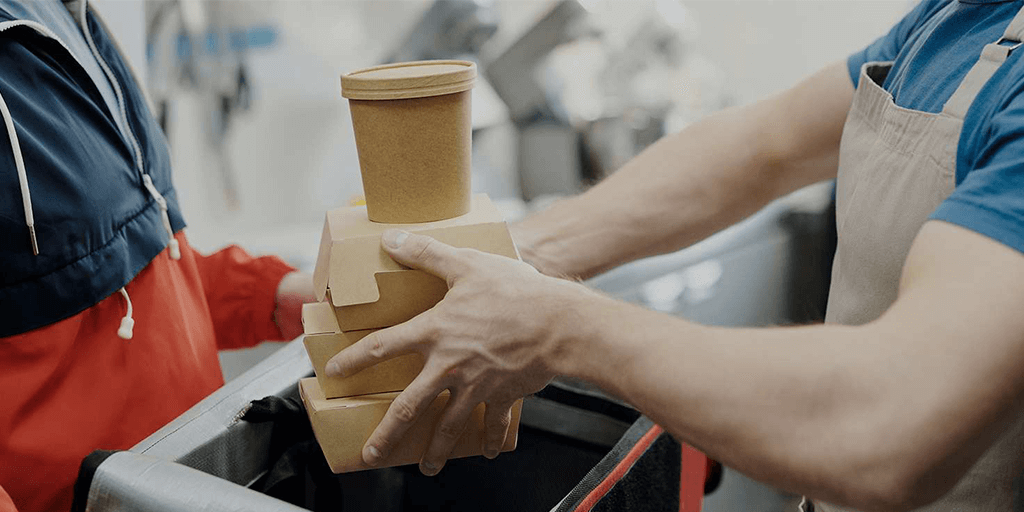Are you ready to embark on the journey of creating your very own food delivery app? As the demand for online food delivery continues to rise, building a food delivery app can be a lucrative business venture. However, it’s important to understand the development process, including the cost and timeline involved.
In this comprehensive guide, we’ll walk you through the steps of developing a food delivery app and provide valuable insights on the associated costs and timeline. From conceptualization to launch, get ready to discover the recipe for success in the competitive world of food delivery apps. Let’s dig in!
From Idea to Reality: Step-by-Step Development Process for Your Food Delivery App
1. Conceptualization and Planning
Define the scope of your food delivery app, including its features, functionalities, target audience, and business model. Create a detailed plan, including wireframes and mockups, to map out the app’s user flow and design.
2. Design and User Experience (UX)
Create visually appealing and user-friendly interfaces for your food delivery app. Focus on providing a seamless and intuitive user experience, including features like easy navigation, clear call-to-actions, and efficient search and filter options.
3. Backend Development
Build the backend infrastructure that powers your food delivery app. This includes setting up servers, databases, APIs, and integrating payment gateways for secure transactions. Ensure robust data handling and server-side logic to handle various app functionalities, such as order management, menu updates, and user authentication.
4. Frontend Development
Develop the frontend components of your food delivery app, including the customer and restaurant interfaces. Implement the user interface (UI) design, incorporate interactive elements, and ensure cross-platform compatibility for both web and mobile platforms.
Implement features that allow customers to place orders, track their delivery status in real-time, and receive notifications. Develop a system that manages orders, dispatches them to the appropriate restaurants or delivery drivers, and provides updates to customers.
6. Payment Integration
Integrate secure payment gateways to enable customers to make payments seamlessly within the app. Ensure compliance with industry-standard security measures for safe and secure transactions.
7. Testing and Quality Assurance (QA)
Thoroughly test your app across different devices, browsers, and operating systems to identify and fix any bugs or issues. Conduct comprehensive QA testing to ensure optimal performance, usability, and reliability.
8. Launch and Deployment
Once your food delivery app is thoroughly tested and refined, it’s time to launch it in the app stores or on the web. Follow the necessary deployment processes for the respective platforms, including App Store and Google Play Store guidelines.
9. Post-launch Support and Updates
Continuously monitor and update your food delivery app to improve its performance, fix any issues, and add new features based on user feedback and market demands.

Need a Tailored Food Delivery App? Look No Further!
Development Cost of a Food Delivery App
The development cost of a food delivery app can vary greatly depending on various factors, such as the complexity of the app, the features and functionalities required, the platform(s) on which the app will be developed (iOS, Android, web), the location of the software development company, and the level of customization and design elements desired.
Here is a breakdown of the different components that may contribute to the development cost of a food delivery app:
- Design: Creating the app’s visual elements.
- Front-end and back-end development: Building the app’s user interface and server-side logic.
- Admin panel integration: Adding a panel for managing app data.
- Payment gateway integration: Incorporating online payment capabilities.
- Third-party API integration: Integrating external services such as maps or notifications.
- Testing and quality assurance: Ensuring the app functions properly.
- Deployment and app store submission: Publishing the app to app stores.
- Ongoing maintenance and updates: Managing post-launch updates and maintenance.
Costs can vary widely depending on app complexity and customization, ranging from a few thousand dollars to several hundred thousand dollars or more. Consulting with an experienced software development company is essential for accurate cost estimation.
Timeline for Developing a Food Delivery App
Planning and Research (2-4 weeks)
- Define the project scope and requirements
- Conduct market research to identify the target audience and competition
- Create wireframes and mockups for the user interface (UI) and user experience (UX)
- Develop a detailed project plan with timelines and milestones
Design (2-4 weeks)
- Finalize the UI/UX design based on wireframes and mockups
- Create visual assets, such as icons, images, and animations
- Review and approve the design with the client or stakeholders
Front-end Development (4-8 weeks)
- Develop the front-end of the app using programming languages and frameworks such as HTML, CSS, JavaScript, and React Native
- Implement the UI/UX design, including navigation, forms, and animations
- Integrate with any third-party APIs, such as maps and payment gateways
Back-end Development (4-8 weeks)
- Develop the back-end of the app using server-side technologies such as Node.js, MySQL, and databases like MongoDB
- Implement features such as user authentication, order management, and payment processing
- Set up APIs for communication between the front-end and back-end
Testing and Quality Assurance (2-4 weeks)
- Conduct extensive testing of the app to identify and fix any bugs, glitches, or usability issues
- Test the app on different devices, browsers, and operating systems
- Conduct user acceptance testing (UAT) to gather feedback and make necessary improvements
Deployment and Launch (1-2 weeks)
- Prepare the app for production deployment, including setting up servers, databases, and other necessary infrastructure
- Upload the app to the app stores (e.g., Apple App Store, Google Play Store) and make it available for download
- Conduct final testing to ensure the app is working as expected in the live environment
- Launch the app to the public and start marketing and promoting it
Post-Launch Maintenance and Updates (ongoing)
- Monitor the app for any issues and fix them promptly
- Gather feedback from users and implement updates and improvements
- Keep the app up-to-date with the latest security patches and software updates
- Continuously optimize the app for better performance and user experience
It’s important to note that these timelines are approximate and can vary based on the specific requirements of your food delivery app, as well as the resources and expertise of your development team. It’s always recommended to work closely with your development team to establish a realistic timeline and keep communication channels open throughout the development process.

How To Start An Online Clothing Store : The Ultimate Guide
Conclusion
Developing a food delivery app involves several key steps, including planning and research, design, front-end and back-end development, testing, deployment, and ongoing maintenance. The timeline for developing a food delivery app can vary depending on factors such as app complexity, team expertise, and specific requirements.
It’s important to work closely with a software development company to establish a realistic timeline and budget. Proper planning, efficient development, and thorough testing can ensure a successful food delivery app that meets the needs of users and drives business growth.





